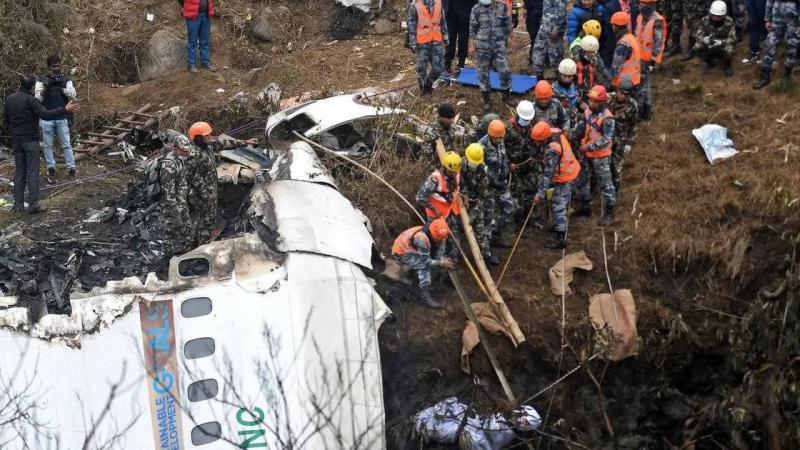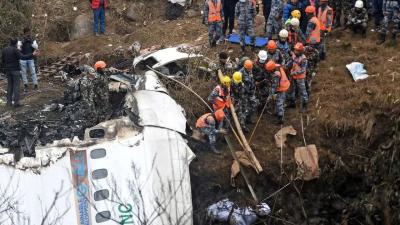Investigations have concluded regarding the worst aviation disaster in Nepal since 1992, revealing a shocking report on the crash of a plane that resulted in the deaths of all 72 passengers in January of last year. Nepali authorities estimated that human error was the cause of the incident, according to a member of the investigation committee on Friday. Bodhi Sagar Lamichhane stated after months of investigation, "Technically, the aircraft was in good condition, but we believe that poor human maneuvering caused the crash," clarifying that a "bad lever" was used in the cockpit.
The report submitted on Thursday to the Ministry of Tourism mentioned an "unintentional operation" of the control measures that severed the aircraft's thrust, leading to a loss of altitude until the crash occurred. The text also discussed "human factors such as a high workload and stress that seemingly led to mistakes in determining and selecting the props." It clarified that the crew did not notice the warning signals indicating that the props had stopped.
The aircraft, an ATR 72 model operated by Yeti Airlines, was carrying 68 passengers and four crew members while traveling between the capital Kathmandu and Pokhara (central). According to a report from the New York Times, a report presented by a committee formed by the Nepali government indicated that the pilot, due to raising the wrong levers, altered the angle of the propeller instead of the wing's flaps, which caused the Yeti Airlines plane to fall, resulting in the death of everyone on board.
The ATR-72, a twin-engine aircraft, was on a half-hour flight from Kathmandu to the tourist city of Pokhara when it crashed on January 15. While the crew was preparing for landing at an altitude of less than 721 feet from the ground, one of the pilots requested adjustments to the wing flaps. Investigators noted that the second pilot mistakenly moved other levers controlling the props, located next to the flap lever, to a position called "rish."
The report explained that the “rish” position reduces drag and can usually be used when the engine is shut down, which can occur automatically or manually. This error allowed air to flow through the props instead of being pushed backward to propel the aircraft and keep it airborne. Shortly thereafter, one of the pilots reported no power coming from the engine.
The report highlighted that the new Pokhara airport had opened just weeks prior, and consequently, the crew had not received adequate training regarding specific skills for the airport. A video posted on social media showed the plane sharply veering to the left as it approached Pokhara Airport, followed by a loud explosion.
Nepali civil aviation has flourished in recent years; however, poor equipment maintenance and lax enforcement of safety rules have impacted the sector despite international recommendations. The European Union has banned all Nepali airlines from entering its airspace for safety reasons.




